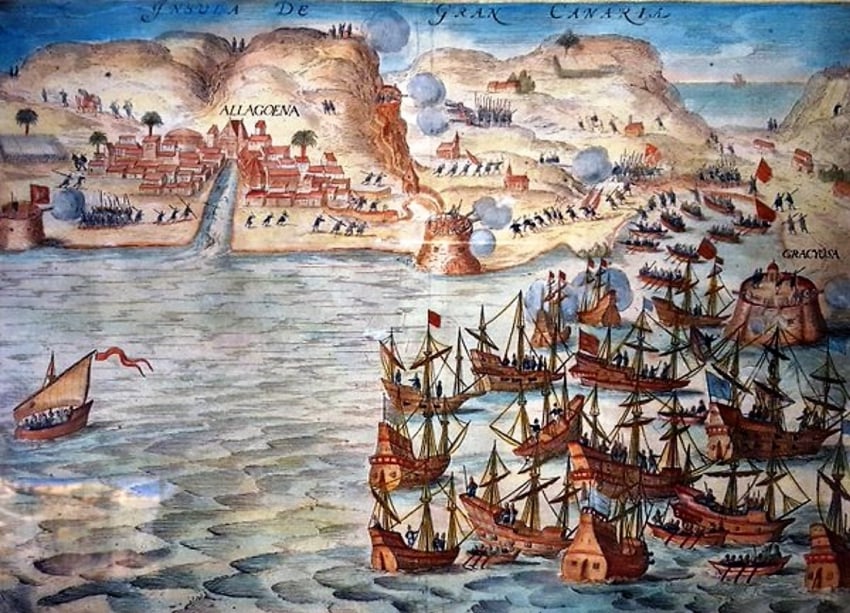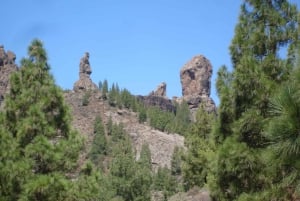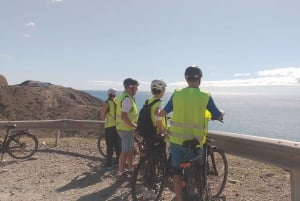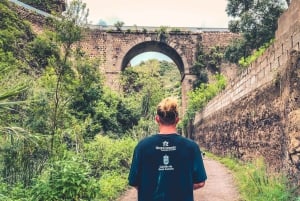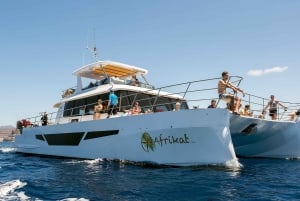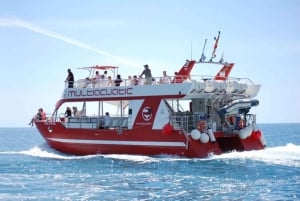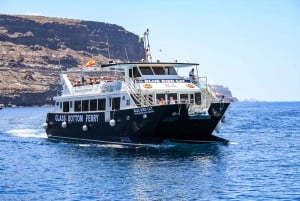A Gentle Stroll Through the History of Gran Canaria
Book Top Experiences and Tours in Gran Canaria:
If youʻre booking your trip to Gran Canaria last minute, we have you covered. Below are some of the top tours and experiences!- From Palmas: Pico de las Nieves & Roque Nublo Full-Day Trip
- Maspalomas: Southern Coast E-Bike Tour Option Tapas Tasting
- Gran Canaria: Guided Day Tour to Rainforest with Tasting
- Gran Canaria: Fun Catamaran Cruise with Food and Drinks
- Gran Canaria: Dolphin and Whale Watching Cruise
The story begins long before anyone thought of package holidays. Around two thousand years ago, the island was settled by the Guanches (Canarii). Believed to be of Berber origin from North Africa, they lived in caves carved into volcanic rock, raised goats, grew barley, and developed their own unique society. Their way of life was simple, ingenious, and well-suited to the rugged landscape. Even today, echoes of their culture survive in archaeological sites, place names, and even local faces.
All that changed in the 15th century when the Spanish Crown set its sights on the Canary Islands. Gran Canaria became the centre of a fierce struggle between the Indigenous people and the Castilian forces. After years of resistance, the island finally fell to Spain in 1483. The Guanche culture began to fade, gradually absorbed into the new colonial world.
Once under Spanish rule, Gran Canaria took on a new role. Its position in the Atlantic made it a perfect stopover for ships heading to the Americas. Christopher Columbus himself anchored in Las Palmas in 1492 to repair one of his ships before continuing his voyage west. The island also became a vital supply base, exporting sugar, wine, and later coffee and bananas, while also importing new crops and ideas from across the Atlantic.
Of course, being strategically important also meant being a target. Pirates and rival powers repeatedly attacked the island. The Dutch famously tried to take Las Palmas in 1599 but were driven back after a month of fighting. Fortifications were strengthened, but life carried on. Trade boomed, churches were built, and the island became ever more entwined with Spain’s fortunes.
By the 18th and 19th centuries, agriculture dominated daily life. Bananas, tomatoes, and sugar cane were exported in huge quantities, much of it bound for Britain and northern Europe. At around the same time, Gran Canaria was also gaining a reputation as a health retreat. Doctors prescribed its climate as a cure for everything from asthma to tuberculosis. Poorly travellers arrived by ship in search of healing warm sunshine staying in the elegant Las Palmas hotels you can still see today.
The 20th century brought an even bigger change, tourism. With air travel making the Canary Islands more accessible, Gran Canaria shifted from an agricultural economy to a visitor-driven one. Resorts sprang up along the south coast, where the weather is almost unfailingly sunny. Maspalomas, Playa del Inglés, and Puerto Rico became familiar names to holidaymakers seeking winter warmth and guaranteed blue skies.
Yet beyond the beaches, the island’s past is never far away. In Las Palmas’ old quarter, Vegueta, you can wander narrow streets where conquistadors once plotted their journeys. Inland, ancient cave dwellings are still used as homes, blending past and present in the most practical way.
It’s a history lived daily, woven into festivals, family recipes, and architecture that has weathered both storms and sieges. This layering of old and new is what gives the island its richness. A place where the past lingers quietly, waiting to be discovered, one cobblestone, one cave, and one story at a time.
Intrigued? Drop-by the engaging Museo Canario and Casa de Colón museums in Las Palmas to learn more about Gran Canaria's history.


